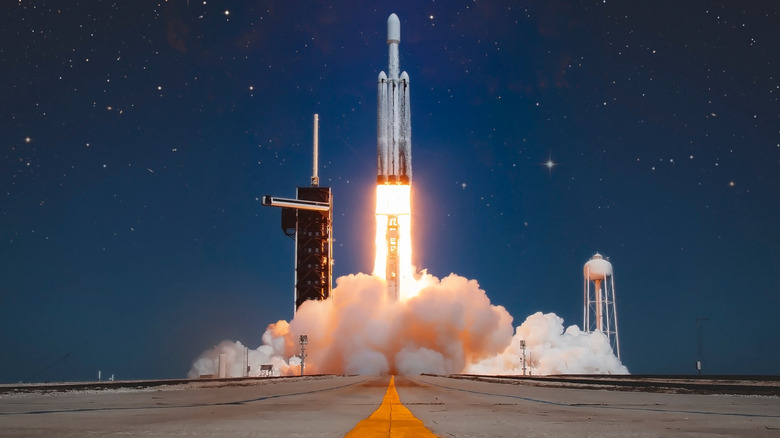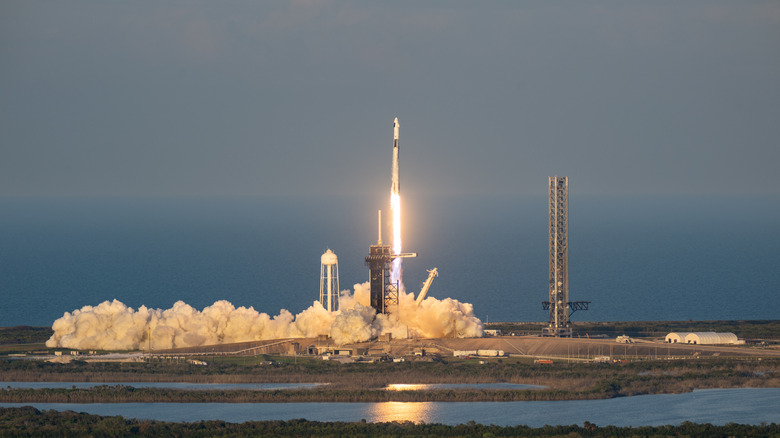Why NASA Uses Half A Million Gallons Of Water During A Rocket Launch
NASA rocket launches have generated some of the most awe-inspiring footage ever captured on camera, thanks largely to the dramatic plumes surrounding the craft as they take to the sky. It looks like smoke blasting from a dragon's nostrils, but it's actually steam, and it comes from two primary sources. Different kinds of rockets have been used throughout history, but when you see a modern NASA launch, you're looking at a liquid fuel rocket powered by a combination of liquid hydrogen and liquid oxygen. Normally, hydrogen and oxygen exist in a gaseous state, but they can be supercooled to make a liquid propellant. To prevent overpressure as the supercooled liquid warms, some of that fuel is bled off before launch, condensing into water vapor around the launchpad.
The second source of the steam is something more surprising. During the preliminary stages of a rocket launch, a set of jets erupts with water, blanketing the launchpad. This is called a water deluge system, otherwise known as a sound and fire suppression system. NASA's newest water deluge system is being used for the Artemis program, which aims to put a human being on the moon for the first time in over 50 years. To accompany a new generation of rockets with record-setting power, this system shoots out 450,000 gallons of water onto the launchpad, all in the span of just one minute. That's as much water as the average American uses in seven years, and for the most part, it gets vaporized by the rockets' heat. So, what's the point?
The purpose of NASA's water deluge system
Why would NASA bother dumping nearly half a million gallons of water during a rocket launch only for it to dissipate as steam? The answer lies in the system's name: sound and fire suppression. Fire suppression is easy to understand: The combustion of rocket fuel generates an enormous amount of heat, which can seriously damage the surface of the launchpad. Jets of water create a protective layer of steam between the rocket and the launchpad's surface, mitigating the damage.
Sound suppression is something most people don't realize the need for, but the sound waves generated by a rocket launch can do even more damage than the heat. Rockets are really, really loud, reaching 200 decibels, which is significantly higher than the decibel level of a jet plane. Sound waves from recent SpaceX Starship rocket launches have set off car alarms as far as 10 miles away, with a June 2024, launch resulting in several birds' eggs shattering in Texas' Boca Chica State Park.
For NASA, there is a major concern that the powerful acoustic energy from a rocket launch could damage delicate equipment onboard the craft, putting billions of dollars, and more importantly, the safety of any crew members, at risk. Blasting the launchpad with water effectively creates a cushion to absorb some of that energy, and with it, NASA can knock a launch from 200 dB, all the way down to 142 dB, which is about the level of an ordinary firework.

